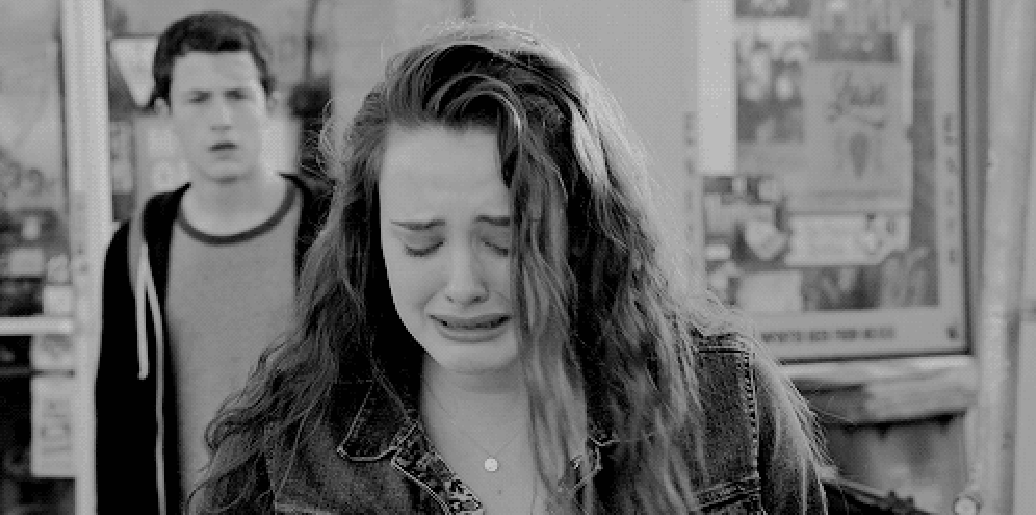**The following contains discussions of suicide, mental illness, and sexual assault. It also contains major spoilers of ’13 Reasons Why’**
The world is abuzz with talk of the new Netflix series 13 Reasons Why. Many think that a series that shows the raw, emotional, and visceral realities of suicide will aid in public understanding of, and outreach to, people living with depression or other mental illnesses. How can this be wrong? Lets start at the beginning…
13 Reasons Why follows the story of high school teen Hannah Baker. Or, more specifically, the story of the end of her life. The show opens about 2 weeks after Hannah committed suicide. Hannah’s friend Clay Jensen receives a package of 7 tapes narrated by his late friend, with each side holding a message for someone in her social circle on what they did to make her decide to end her life, for a total of 13 reasons.
This is where we run into our first two problems: firstly, the tapes themselves. The trope in media is that when somebody decides to commit suicide, they would leave a suicide note. But in the real world, only about 25% of people will leave any kind of note. Some studies have this number at about 17%, or 1 in 6. Only 1 in 6 families and friends of victims will receive that closure. But, the tapes from the show aren’t about closure. At least, not for those they address. Instead, Hannah uses the 60-minutes-a-side tapes to describe in detail all the ways that the people she knows have done her wrong. She talks of times she was humiliated, when rumours were spread about her, or when her trust is betrayed by those who should know better. In two of the later tapes, she explicitly describes witnessing the rape of one of her friends, and later her own rape at the hands of the same man. This message is incredibly dangerous to the teen audience the show is aimed at; it tells vulnerable people watching that there can be some kind of post-mortem retribution. It tells them hey, don’t worry about them. If you leave a note, that’ll show them. The people who hurt you will listen then! This is not true.
The other problem is the idea of premeditation. In one study 61.8% of suicide attempts were impulsive – just 9.7% were premeditated. The remaining 28.5% contemplated for 3 hours or less before their attempt. However, Hannah spends a week collecting her thoughts, organising her plan, and recording the tapes. The show presents this time as the time her friends could have helped her. The time you could be saved. Or that you could save your friend. In reality, that window rarely exists. The people that need help need it before they get to this point.
There is an argument to be made that the series intends to critique the idea of committing suicide, that it shows those who might be thinking about it the dark reality of doing so. However, simply showing an act does not automatically equate to criticism or commentary. For example, if we see Tony Soprano killing a man for being late to pay back a loan, and we all collectively agree that when you are late to pay back a loan to a mobster you are killed, no criticism has been generated, we have simply reproduced a situation that we understand to possibly exist in the world. School is a rough place, and teenagers can be unendingly cruel. The portrayal of any heinous act as we collectively understand it to happen in the world is not criticism, it is reproduction.
The lack of a viable alternative for Hannah within the show is also a big problem. In the final episode, we see that Hannah gave life one more chance. She went to see the school councillor and told him that she wanted her life to stop. She described her rape to him, and he blew her off. In this, Hannah knows what she must do. We are shown in graphic detail, her death. We see her final tears as she leaves this world, but we also see the tears stop. We see her find the peace that she so desperately sought. To end on this, and then have to seek out a separate show to explain to us why this is not the way to go is irresponsible. You would never watch Stephen Colbert play the role of a conservative and racist talk show host, and then have to switch channel to find him out of character detailing the reasons that racism is wrong.
Alongside the show, Netflix also released a 30 minute special called Beyond the reasons, wherein cast and crew discuss the problems of teen depression and suicide. But for the time between finishing the show and watching the special – of which is listed as its own entity in the Netflix library, not part of the episode listings for the series proper – they have created a situation where Hannah’s decision is considered normal.
The concept of “suicidal contagion”, the idea that the depiction of suicide in media – especially one as graphic and gruesome as that in 13 Reasons Why – temporarily increases suicide attempts, is very real and very distressing. Mental health groups around Australia have come out to warn against the show’s subject matter, with Headspace calling it “Dangerous Content”, and noted that the show had caused them to receive an influx of calls and emails. Perhaps that should be the premise for Season 2.
Words by Michael Winsall
If you or someone you know needs help, please contact Lifeline on 13 11 14 or Headspace on 1800 650 890.

